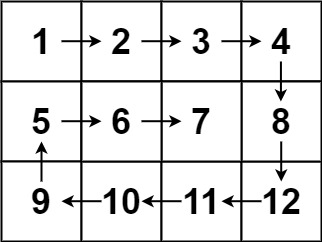C++入门基础
hello 各位未来的程序员大佬们,这一篇是详细介绍入门基础,和上一篇不同的是这一篇补完了引用的知识和inline,nullptr的知识,希望大家有所收获

namespace的价值
在C/C++中,变量、函数和后⾯要学到的类都是⼤量存在的,这些变量、函数和类的名称将都存在于全 局作⽤域中,可能会导致很多冲突。使⽤命名空间的⽬的是对标识符的名称进⾏本地化,以避免命名 冲突或名字污染,namespace关键字的出现就是针对这种问题的。
c语⾔项⽬类似下⾯程序这样的命名冲突是普遍存在的问题,C++引⼊namespace就是为了更好的解决 这样的问题
#include <stdio.h>
#include <stdlib.h>
int rand = 10;
int main()
{
// 编译报错:error C2365: “rand”: 重定义;以前的定义是“函数”
printf("%d\n", rand);
return 0;
}
namespace的定义
• 定义命名空间,需要使⽤到namespace关键字,后⾯跟命名空间的名字,然后接⼀对{}即可,{}中 即为命名空间的成员。命名空间中可以定义变量/函数/类型等。
• namespace本质是定义出⼀个域,这个域跟全局域各⾃独⽴,不同的域可以定义同名变量,所以下 ⾯的rand不在冲突了。
• C++中域有函数局部域,全局域,命名空间域,类域;域影响的是编译时语法查找⼀个变量/函数/ 类型出处(声明或定义)的逻辑,所有有了域隔离,名字冲突就解决了。局部域和全局域除了会影响 编译查找逻辑,还会影响变量的⽣命周期,命名空间域和类域不影响变量⽣命周期。
#define _CRT_SECURE_NO_WARNINGS 1
#include <stdio.h>
#include <stdlib.h>
// 1. 正常的命名空间定义
namespace Tzuyu
{
// 命名空间中可以定义变量/函数/类型
int rand = 10;
}
//2. 命名空间可以嵌套
namespace Red
{
namespace Velvet
{
int rand = 1;
int Add(int left, int right)
{
return left + right;
}
}
namespace Irene
{
int rand = 2;
int Add(int left, int right)
{
return (left + right) * 10;
}
}
}
int main()
{
// 这⾥默认是访问的是全局的rand函数指针
//printf("%d\n", rand);
// 这⾥指定Tzuyu命名空间中的rand
printf("%d\n",Tzuyu::rand);
printf("%d\n", Red::Velvet::Add(1,2));
printf("%d\n", Red::Irene::Add(1,2));
return 0;
}
// 多⽂件中可以定义同名namespace,他们会默认合并到⼀起,就像同⼀个namespace⼀样
// Stack.h
#pragma once
#include<stdio.h>
#include<stdlib.h>
#include<stdbool.h>
#include<assert.h>
namespace bit
{
typedef int STDataType;
typedef struct Stack
{
STDataType* a;
int top;
int capacity;
}ST;
void STInit(ST* ps, int n);
void STDestroy(ST* ps);
void STPush(ST* ps, STDataType x);
void STPop(ST* ps);
STDataType STTop(ST* ps);
int STSize(ST* ps);
bool STEmpty(ST* ps);
}
// Stack.cpp
#include"Stack.h"
namespace bit
{
void STInit(ST* ps, int n)
{
assert(ps);
ps->a = (STDataType*)malloc(n * sizeof(STDataType));
ps->top = 0;
ps->capacity = n;
}
// 栈顶
void STPush(ST* ps, STDataType x)
{
assert(ps);
// 满了, 扩容
if (ps->top == ps->capacity)
{
printf("扩容\n");
int newcapacity = ps->capacity == 0 ? 4 : ps->capacity* 2;
STDataType* tmp = (STDataType*)realloc(ps->a,
newcapacity * sizeof(STDataType));
if (tmp == NULL)
{
perror("realloc fail");
return;
}
ps->a = tmp;
ps->capacity = newcapacity;
}
ps->a[ps->top] = x;
ps->top++;
}
//...
}
// Queue.h
#pragma once
#include<stdlib.h>
#include<stdbool.h>
#include<assert.h>
namespace bit
{
typedef int QDataType;
typedef struct QueueNode
{
int val;
struct QueueNode* next;
}QNode;
typedef struct Queue
{
QNode* phead;
QNode* ptail;
int size;
}Queue;
void QueueInit(Queue* pq);
void QueueDestroy(Queue* pq);
// ⼊队列
void QueuePush(Queue* pq, QDataType x);
// 出队列
void QueuePop(Queue* pq);
QDataType QueueFront(Queue* pq);
QDataType QueueBack(Queue* pq);
bool QueueEmpty(Queue* pq);
int QueueSize(Queue* pq);
}
// Queue.cpp
#include"Queue.h"
namespace bit
{
void QueueInit(Queue* pq)
{
assert(pq);
pq->phead = NULL;
pq->ptail = NULL;
pq->size = 0;
}
// ...
}
// test.cpp
#include"Queue.h"
#include"Stack.h"
// 全局定义了⼀份单独的Stack
typedef struct Stack
{
int a[10];
int top;
}ST;
void STInit(ST* ps){}
void STPush(ST* ps, int x){}
int main()
{
// 调⽤ST st1;
STInit(&st1);
STPush(&st1, 1);
STPush(&st1, 2);
printf("%d\n", sizeof(st1));
// 调⽤bit namespace的
bit::ST st2;
printf("%d\n", sizeof(st2));
bit::STInit(&st2);
bit::STPush(&st2, 1);
bit::STPush(&st2, 2);
return 0;
}
• namespace只能定义在全局,当然他还可以嵌套定义。
• 项⽬⼯程中多⽂件中定义的同名namespace会认为是⼀个namespace,不会冲突。
• C++标准库都放在⼀个叫std(standard)的命名空间中。
命名空间使⽤
编译查找⼀个变量的声明/定义时,默认只会在局部或者全局查找,不会到命名空间⾥⾯去查找。所以 下⾯程序会编译报错。所以我们要使⽤命名空间中定义的变量/函数,有三种⽅式:
• 指定命名空间访问,项⽬中推荐这种⽅式。
• 展开命名空间中全部成员,项⽬不推荐,冲突⻛险很⼤,⽇常⼩练习程序为了⽅便推荐使⽤。
namespace hhh
{
int a = 0;
int b = 1;
}
int main()
{
// 编译报错:error C2065: “a”: 未声明的标识符
printf("%d\n", a);
return 0;
}
// 指定命名空间访问
int main()
{
printf("%d\n", hhh::a);
return 0;
}
// using将命名空间中某个成员展开
using hhh::b;
int main()
{
printf("%d\n", hhh::a);
printf("%d\n", b);
return 0;
}
// 展开命名空间中全部成员
using namespce hhh;
int main()
{
printf("%d\n", a);
printf("%d\n", b);
return 0;
}
C++输⼊&输出
• 是 Input Output Stream 的缩写,是标准的输⼊、输出流库,定义了标准的输⼊、输 出对象。
• std::cin 是 istream 类的对象,它主要⾯向窄字符(narrow characters (of type char))的标准输 ⼊流。
• std::cout 是 ostream 类的对象,它主要⾯向窄字符的标准输出流。
• std::endl 是⼀个函数,流插⼊输出时,相当于插⼊⼀个换⾏字符加刷新缓冲区。
• <<是流插⼊运算符,>>是流提取运算符。(C语⾔还⽤这两个运算符做位运算左移/右移)
• 使⽤C++输⼊输出更⽅便,不需要像printf/scanf输⼊输出时那样,需要⼿动指定格式,C++的输⼊ 输出可以⾃动识别变量类型(本质是通过函数重载实现的),其实最重要的是 C++的流能更好的⽀持⾃定义类型对象的输⼊输出。
• cout/cin/endl等都属于C++标准库,C++标准库都放在⼀个叫std(standard)的命名空间中,所以要 通过命名空间的使⽤⽅式去⽤他们。
• ⼀般⽇常练习中我们可以using namespace std,实际项⽬开发中不建议using namespace std。
• 这⾥我们没有包含<stdio.h>,也可以使⽤printf和scanf,在包含间接包含了。vs系列 编译器是这样的,其他编译器可能会报错。
#define _CRT_SECURE_NO_WARNINGS 1
#include <iostream>
using namespace std;
int main()
{
int a = 0;
double b = 0.1;
char c = 'x';
cout << a << " " << b << " " << c << endl;
std::cout << a << " " << b << " " << c << std::endl;
scanf("%d%lf", &a, &b);
printf("%d %lf\n", a, b);
// 可以⾃动识别变量的类型
cin >> a;
cin >> b >> c;
cout << a << endl;
cout << b << " " << c << endl;
return 0;
}
#include<iostream>
using namespace std;
int main()
{
// 在io需求⽐较⾼的地⽅,如部分⼤量输⼊的竞赛题中,加上以下3⾏代码
// 可以提⾼C++IO效率
ios_base::sync_with_stdio(false);
cin.tie(nullptr);
cout.tie(nullptr);
return 0;
}
缺省参数
• 缺省参数是声明或定义函数时为函数的参数指定⼀个缺省值。在调⽤该函数时,如果没有指定实参 则采⽤该形参的缺省值,否则使⽤指定的实参,缺省参数分为全缺省和半缺省参数。(有些地⽅把 缺省参数也叫默认参数)
• 全缺省就是全部形参给缺省值,半缺省就是部分形参给缺省值。C++规定半缺省参数必须从右往左 依次连续缺省,不能间隔跳跃给缺省值。
• 带缺省参数的函数调⽤,C++规定必须从左到右依次给实参,不能跳跃给实参。
• 函数声明和定义分离时,缺省参数不能在函数声明和定义中同时出现,规定必须函数声明给缺省 值。
#include <iostream>
#include <assert.h>
using namespace std;
void Func(int a = 0)
{
cout << a << endl;
}
int main()
{
Func(); // 没有传参时,使⽤参数的默认值
Func(10); // 传参时,使⽤指定的实参
return 0;
}
#include <iostream>
using namespace std;
// 全缺省
void Func1(int a = 10, int b = 20, int c = 30)
{
cout << "a = " << a << endl;
cout << "b = " << b << endl;
cout << "c = " << c << endl << endl;
}
// 半缺省
void Func2(int a, int b = 10, int c = 20)
{
cout << "a = " << a << endl;
cout << "b = " << b << endl;
cout << "c = " << c << endl << endl;
}
int main()
{
Func1();
Func1(1);
Func1(1,2);
Func1(1,2,3);
Func2(100);
Func2(100, 200);
Func2(100, 200, 300);
return 0;
}
优化栈的实现:
// Stack.h
#include <iostream>
#include <assert.h>
using namespace std;
typedef int STDataType;
typedef struct Stack
{
STDataType* a;
int top;
int capacity;
}ST;
void STInit(ST* ps, int n = 4);
// Stack.cpp
#include"Stack.h"
// 缺省参数不能声明和定义同时给
void STInit(ST* ps, int n)
{
assert(ps && n > 0);
ps->a = (STDataType*)malloc(n * sizeof(STDataType));
ps->top = 0;
ps->capacity = n;
}
// test.cpp
#include"Stack.h"
int main()
{
ST s1;
STInit(&s1);
// 确定知道要插⼊1000个数据,初始化时⼀把开好,避免扩容
ST s2;
STInit(&s2, 1000);
return 0;
}
函数重载
C++⽀持在同⼀作⽤域中出现同名函数,但是要求这些同名函数的形参不同,可以是参数个数不同或者 类型不同。这样C++函数调⽤就表现出了多态⾏为,使⽤更灵活。C语⾔是不⽀持同⼀作⽤域中出现同 名函数的。
#include<iostream>
using namespace std;
// 1、参数类型不同
int Add(int left, int right)
{
cout << "int Add(int left, int right)" << endl;
return left + right;
}
double Add(double left, double right)
{
cout << "double Add(double left, double right)" << endl;
return left + right;
}
// 2、参数个数不同
void f()
{
cout << "f()" << endl;
}
void f(int a)
{
cout << "f(int a)" << endl;
}
// 3、参数类型顺序不同
void f(int a, char b)
{
cout << "f(int a,char b)" << endl;
}
void f(char b, int a)
{
cout << "f(char b, int a)" << endl;
}
// 返回值不同不能作为重载条件,因为调⽤时也⽆法区分
//void fxx()
//{}
//
//int fxx()
//{
// return 0;
//}
// 下⾯两个函数构成重载
// f()但是调⽤时,会报错,存在歧义,编译器不知道调⽤谁
void f1()
{
cout << "f()" << endl;
}
void f1(int a = 10)
{
cout << "f(int a)" << endl;
}
int main()
{
Add(10, 20);
Add(10.1, 20.2);
f();
f(10);
f(10, 'a');
f('a', 10);
return 0;
}
引⽤
引⽤的概念和定义
引⽤不是新定义⼀个变量,⽽是给已存在变量取了⼀个别名,编译器不会为引⽤变量开辟内存空间, 它和它引⽤的变量共⽤同⼀块内存空间。⽐如:水浒传中李逵,宋江叫"铁⽜",江湖上⼈称"⿊旋 ⻛";林冲,外号豹⼦头;
类型& 引⽤别名 = 引⽤对象;
C++中为了避免引⼊太多的运算符,会复⽤C语⾔的⼀些符号,⽐如前⾯的<< 和 >>,这⾥引⽤也和取 地址使⽤了同⼀个符号&,⼤家注意使⽤⽅法⻆度区分就可以。(吐槽⼀下,这个问题其实挺坑的,个 ⼈觉得⽤更多符号反⽽更好,不容易混淆)

#include<iostream>
using namespace std;
int main()
{
int a = 0;
// 引⽤:b和c是a的别名
int& b = a;
int& c = a;
// 也可以给别名b取别名,d相当于还是a的别名
int& d = b;
++d;
// 这⾥取地址我们看到是⼀样的
cout << &a << endl;
cout << &b << endl;
cout << &c << endl;
cout << &d << endl;
return 0;
}
运行结果如下:

引⽤的特性
• 引⽤在定义时必须初始化
• ⼀个变量可以有多个引⽤
• 引⽤⼀旦引⽤⼀个实体,再不能引⽤其他实体
#include<iostream>
using namespace std;
int main()
{
int a = 10;
// 编译报错:“a”: 必须初始化引⽤
//int& a;
int& b = a;
int c = 20;
// 这⾥并⾮让b引⽤c,因为C++引⽤不能改变指向,
// 这⾥是⼀个赋值
b =c;
cout << &a << endl;
cout << &b << endl;
cout << &c << endl;
return 0;
}
引⽤的使⽤
• 引⽤在实践中主要是于引⽤传参和引⽤做返回值中减少拷⻉提⾼效率和改变引⽤对象时同时改变被 引⽤对象。
• 引⽤传参跟指针传参功能是类似的,引⽤传参相对更⽅便⼀些。
• 引⽤和指针在实践中相辅相成,功能有重叠性,但是各有特点,互相不可替代。C++的引⽤跟其他 语⾔的引⽤(如Java)是有很⼤的区别的,除了⽤法,最⼤的点,C++引⽤定义后不能改变指向, Java的引⽤可以改变指向。
• ⼀些主要⽤C代码实现版本数据结构教材中,使⽤C++引⽤替代指针传参,⽬的是简化程序,避开 复杂的指针,但是很多同学没学过引⽤,导致⼀头雾⽔。
void Swap(int& rx, int& ry)
{
int tmp = rx;
rx = ry;
ry = tmp;
}
int main()
{
int x = 0, y = 1;
cout << x <<" " << y << endl;
Swap(x, y);
cout << x << " " << y << endl;
return 0;
}
#include<iostream>
using namespace std;
typedef int STDataType;
typedef struct Stack
{
STDataType* a;
int top;
int capacity;
}ST;
void STInit(ST& rs, int n = 4)
{
rs.a = (STDataType*)malloc(n * sizeof(STDataType));
rs.top = 0;
rs.capacity = n;
}
// 栈顶
void STPush(ST& rs, STDataType x)
{
assert(ps);
// 满了, 扩容
if (rs.top == rs.capacity)
{
printf("扩容\n");
int newcapacity = rs.capacity == 0 ? 4 : rs.capacity * 2;
STDataType* tmp = (STDataType*)realloc(rs.a, newcapacity *
sizeof(STDataType));
if (tmp == NULL)
{
perror("realloc fail");
return;
}
rs.a = tmp;
rs.capacity = newcapacity;
}
rs.a[rs.top] = x;
rs.top++;
}
// int STTop(ST& rs)
int& STTop(ST& rs)
{
assert(rs.top > 0);
return rs.a[rs.top];
}
int main()
{
// 调⽤全局的
ST st1;
STInit(st1);
STPush(st1, 1);
STPush(st1, 2);
cout << STTop(st1) << endl;
STTop(st1) += 10;
cout << STTop(st1) << endl;
return 0;
}
#include<iostream>
using namespace std;
typedef struct SeqList
{
int a[10];
int size;
}SLT;
// ⼀些主要⽤C代码实现版本数据结构教材中,使⽤C++引⽤替代指针传参,⽬的是简化程序,避开复
杂的指针,但是很多同学没学过引⽤,导致⼀头雾⽔。
void SeqPushBack(SLT& sl, int x)
{}
typedef struct ListNode
{
int val;
struct ListNode* next;
}LTNode, *PNode;
// 指针变量也可以取别名,这⾥LTNode*& phead就是给指针变量取别名
// 这样就不需要⽤⼆级指针了,相对⽽⾔简化了程序
//void ListPushBack(LTNode** phead, int x)
//void ListPushBack(LTNode*& phead, int x)
void ListPushBack(PNode& phead, int x)
{
PNode newnode = (PNode)malloc(sizeof(LTNode));
newnode->val = x;
newnode->next = NULL;
if (phead == NULL)
{
phead = newnode;
}
else
{
//...
}
}
int main()
{
PNode plist = NULL;
ListPushBack(plist, 1);
return 0;
}

可以大大优化代码,之前写一些数据结构的时候可能会面临着传址调用,形参改变实参的问题,这个用引用可以很好的提高效率
一些小小补充:
看下列代码:
typedef struct ListNode
{
int val;
struct ListNode* next;
}LTNode, *PNode;
//typedef struct ListNode* PNode; 只是为了节省将*PNode写到了上面
void ListPushBack(PNode& phead, int x)
{
PNode newnode = (PNode)malloc(sizeof(LTNode));
newnode->val = x;
newnode->next = NULL;
if (phead == NULL)
{
phead = newnode;
}
else
{
//...
}
}
int main()
{
PNode plist = NULL;
ListPushBack(plist, 1);
return 0;
}
我们在之前学习数据结构譬如链表的创建和销毁要用到二级指针,我们学习了引用的知识以后可以不用二级指针了
引用不能代替指针,如以下场景:

我们删除指定位置的元素的时候,如果是引用的话,不可以改变指向,不能跨过要删除的元素,所以引用不能代替指针

再来看上面这种情况:如果说想修改栈顶的数据,第一种情况,会存在临时拷贝,如果不进行,会报错,第二种就是去引用,引用的话就不会报错,如果想要使用指针,需要将其解引用

这里我们要想到函数栈帧的创建和销毁的知识,栈区如果出了作用域会被销毁,上图所示,将ret返回,但是已经被销毁了,所以相当于是野引用了
小小科普:
为什么程序越界了不会报错?
// 越界是不一定报错的
int a[10];
// 越界读不报错
cout << a[10] << endl;
cout << a[11] << endl;
cout << a[12] << endl;
//
// 越界写不一定报错,一般是抽查
a[10] = 1;
a[11] = 1;
a[12] = 1;
a[20] = 1;
return 0;

const引⽤
• 可以引⽤⼀个const对象,但是必须⽤const引⽤。const引⽤也可以引⽤普通对象,因为对象的访 问权限在引⽤过程中可以缩⼩,但是不能放⼤。
• 需要注意的是类似 int& rb = a * 3; double d = 12.34; int& rd = d; 这样⼀些场 景下a *3的和结果保存在⼀个临时对象中, int& rd = d 也是类似,在类型转换中会产⽣临时对 象存储中间值,也就是时,rb和rd引⽤的都是临时对象,⽽C++规定临时对象具有常性,所以这⾥ 就触发了权限放⼤,必须要⽤常引⽤才可以
• 所谓临时对象就是编译器需要⼀个空间暂存表达式的求值结果时临时创建的⼀个未命名的对象, C++中把这个未命名对象叫做临时对象。
//引用中的const
int main()
{
const int a = 10;
// 权限不能放大
int& ra = a;
const int& ra = a;
// 权限可以缩小
int b = 1;
const int& rb = b;
//rb++; 因为const修饰的是rb,const修饰哪个变量,哪个变量就不能权限放大
b++;
// 是不是权限得放大?不是
const int x = 0;
int y = x;//这里是开辟了新的空间,y不受到const的限制
return 0;
}
//指针中的const
int main()
{
// 权限不能放大
const int a = 10;
const int* p1 = &a;
//int* p2 = p1;int* p2 = p1,因为p1是const int * ,所以是权限小的赋值给权限大的,会报错
// 权限可以缩小
int b = 20;
int* p3 = &b;
const int* p4 = p3;
//const在前面修饰的是指向的内容,const在指针变量后修饰的是指针
// 不存在权限放大,因为const修饰的是p5本身不是指向的内容
int* const p5 = &b;
int* p6 = p5;
return 0;
}
void f1(const T& rx)
void f1(const int& rx)
{}
int main()
{
const int xx = 20;
int a = 10;
const int& rb = a * 3;
double d = 12.34;
const int& rd = d;
f1(xx);
f1(a);
f1(a*3);
f1(d);
return 0;
}

总结
const引用可以引用:
- const对象
- 普通对象
- 临时对象
指针和引⽤的关系
C++中指针和引⽤就像两个性格迥异的亲兄弟,指针是哥哥,引⽤是弟弟,在实践中他们相辅相成,功 能有重叠性,但是各有⾃⼰的特点,互相不可替代。
• 语法概念上引⽤是⼀个变量的取别名不开空间,指针是存储⼀个变量地址,要开空间。
• 引⽤在定义时必须初始化,指针建议初始化,但是语法上不是必须的
• 引⽤在初始化时引⽤⼀个对象后,就不能再引⽤其他对象;⽽指针可以在不断地改变指向对象
• sizeof中含义不同,引⽤结果为引⽤类型的⼤⼩,但指针始终是地址空间所占字节个数(32位平台下 占4个字节,64位下是8byte)
• 指针很容易出现空指针和野指针的问题,引⽤很少出现,引⽤使⽤起来相对更安全⼀些
小小的科普来讲:(仅需做个了解)
底层汇编代码角度来看,引用也是指针来进行实现的

inline
• ⽤inline修饰的函数叫做内联函数,编译时C++编译器会在调⽤的地⽅展开内联函数,这样调⽤内联 函数就不需要建⽴栈帧了,就可以提⾼效率。
• inline对于编译器⽽⾔只是⼀个建议,也就是说,你加了inline编译器也可以选择在调⽤的地⽅不展 开,不同编译器关于inline什么情况展开各不相同,因为C++标准没有规定这个。inline适⽤于频繁 调⽤的短⼩函数,对于递归函数,代码相对多⼀些的函数,加上inline也会被编译器忽略。
• C语⾔实现宏函数也会在预处理时替换展开,但是宏函数实现很复杂很容易出错的,且不⽅便调 试,C++设计了inline⽬的就是替代C的宏函数。
• vs编译器 debug版本下⾯默认是不展开inline的,这样⽅便调试,debug版本想展开需要设置⼀下 以下两个地⽅。
• inline不建议声明和定义分离到两个⽂件,分离会导致链接错误。因为inline被展开,就没有函数地 址,链接时会出现报错。
#include<iostream>
using namespace std;
inline int Add(int x, int y)
{
int ret = x + y;
ret += 1;
ret += 1;
ret += 1;
return ret;
}
int main()
{
// 可以通过汇编观察程序是否展开
// 有call Add语句就是没有展开,没有就是展开了
int ret = Add(1, 2);
cout << Add(1, 2) * 5 << endl;
return 0;
}
#include<iostream>
using namespace std;
// 实现⼀个ADD宏函数的常⻅问题
//#define ADD(int a, int b) return a + b;
//#define ADD(a, b) a + b;
//#define ADD(a, b) (a + b)
// 正确的宏实现
#define ADD(a, b) ((a) + (b))
// 为什么不能加分号?
因为本质是替换,所以会把冒号带过去,冒号表示程序运行结束,会出现问题
// 为什么要加外⾯的括号?
因为运算的优先级
// 为什么要加⾥⾯的括号?
int main()
{
int ret = ADD(1, 2);
cout << ADD(1, 2) << endl;
cout << ADD(1, 2)*5 << endl;
int x = 1, y = 2;
ADD(x & y, x | y); // -> (x&y+x|y)
return 0;
}



如果全部展开的话,会存在效率运行效率下降的问题,好比下游戏每次更新好几个GB差不多的感觉
nullptr
NULL实际是⼀个宏,在传统的C头⽂件(stddef.h)中,可以看到如下代码:
#ifndef NULL
#ifdef __cplusplus
#define NULL 0
#else
#define NULL ((void *)0)
#endif
#endif
• C++中NULL可能被定义为字⾯常量0,或者C中被定义为⽆类型指针(void *)的常量。不论采取何种 定义,在使⽤空值的指针时,都不可避免的会遇到⼀些⿇烦,本想通过f(NULL)调⽤指针版本的 f(int * )函数,但是由于NULL被定义成0,调⽤了f(int x),因此与程序的初衷相悖。f((void *)NULL); 调⽤会报错。
• C++11中引⼊nullptr,nullptr是⼀个特殊的关键字,nullptr是⼀种特殊类型的字⾯量,它可以转换 成任意其他类型的指针类型。使⽤nullptr定义空指针可以避免类型转换的问题,因为nullptr只能被 隐式地转换为指针类型,⽽不能被转换为整数类型。
#include<iostream>
using namespace std;
void f(int x)
{
cout << "f(int x)" << endl;
}
void f(int* ptr)
{
cout << "f(int* ptr)" << endl;
}
int main()
{
f(0);
// 本想通过f(NULL)调⽤指针版本的f(int*)函数,但是由于NULL被定义成0,调⽤了f(int
x),因此与程序的初衷相悖。
f(NULL);
f((int*)NULL);
// 编译报错:error C2665: “f”: 2 个重载中没有⼀个可以转换所有参数类型
// f((void*)NULL);
f(nullptr);
return 0;
}
[外链图片转存中…(img-7ZmajM8S-1722875440104)]
如果全部展开的话,会存在效率运行效率下降的问题,好比下游戏每次更新好几个GB差不多的感觉
nullptr
NULL实际是⼀个宏,在传统的C头⽂件(stddef.h)中,可以看到如下代码:
#ifndef NULL
#ifdef __cplusplus
#define NULL 0
#else
#define NULL ((void *)0)
#endif
#endif
• C++中NULL可能被定义为字⾯常量0,或者C中被定义为⽆类型指针(void *)的常量。不论采取何种 定义,在使⽤空值的指针时,都不可避免的会遇到⼀些⿇烦,本想通过f(NULL)调⽤指针版本的 f(int * )函数,但是由于NULL被定义成0,调⽤了f(int x),因此与程序的初衷相悖。f((void *)NULL); 调⽤会报错。
• C++11中引⼊nullptr,nullptr是⼀个特殊的关键字,nullptr是⼀种特殊类型的字⾯量,它可以转换 成任意其他类型的指针类型。使⽤nullptr定义空指针可以避免类型转换的问题,因为nullptr只能被 隐式地转换为指针类型,⽽不能被转换为整数类型。
#include<iostream>
using namespace std;
void f(int x)
{
cout << "f(int x)" << endl;
}
void f(int* ptr)
{
cout << "f(int* ptr)" << endl;
}
int main()
{
f(0);
// 本想通过f(NULL)调⽤指针版本的f(int*)函数,但是由于NULL被定义成0,调⽤了f(int
x),因此与程序的初衷相悖。
f(NULL);
f((int*)NULL);
// 编译报错:error C2665: “f”: 2 个重载中没有⼀个可以转换所有参数类型
// f((void*)NULL);
f(nullptr);
return 0;
}



















